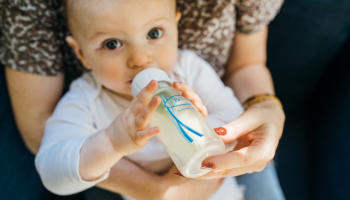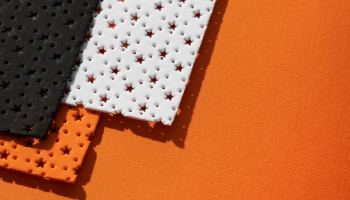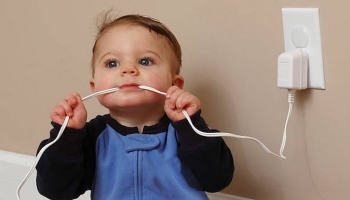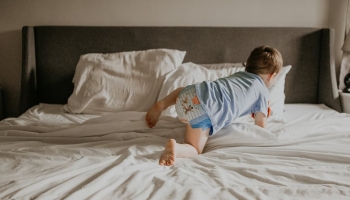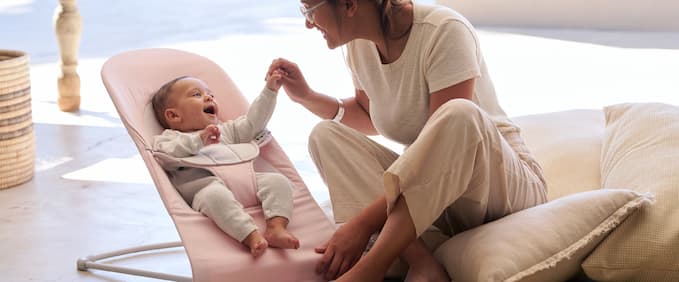
Bouncers and rockers are two popular styles of chairs that have been around for decades. While both types of chairs offer comfort and style, they differ in design and functionality. Bouncers are typically designed to sway back and forth, providing a gentle rocking motion, while rockers feature a curved base that allows for a more pronounced rocking motion.
Bouncers and rockers are often used interchangeably, but they each have their own unique features and benefits. Bouncers are great for soothing babies and helping them fall asleep, as the gentle motion mimics the feeling of being rocked in a parent’s arms. Rockers, on the other hand, are more versatile and can be used by people of all ages. They are often used in living rooms and bedrooms as a comfortable and stylish seating option.
Understanding Bouncer and Rocker
Bouncers and rockers are both popular baby gear items that parents use to soothe and entertain their babies. However, they are not the same thing, and understanding the differences between them can help parents make an informed choice when deciding which one to buy.
Bouncers
Baby bouncers are designed to provide a gentle bouncing motion that can calm and soothe babies. They typically consist of a seat that is suspended from a frame by springs or elastic bands. When the baby moves or kicks, the seat bounces up and down, creating a gentle motion that can help soothe the baby to sleep.
Rockers
Baby rockers, on the other hand, are designed to provide a gentle rocking motion that can also soothe and calm babies. They typically consist of a seat that is attached to a curved base, which allows the seat to rock back and forth.
Bouncer vs. Rocker
So, which one is better, a bouncer or a rocker? The answer depends on your needs and preferences. Bouncers are usually more affordable and portable, making them a great choice for parents who want a simple and easy-to-use baby gear item. Rockers, on the other hand, are usually more expensive and take up more space, but they provide a more soothing and comfortable experience for babies who need to be rocked to sleep.
Key Differences
When it comes to baby gear, two popular options for soothing infants are bouncers and rockers. While they may seem similar at first glance, there are some key differences between the two.
One of the main differences is in their movement. Bouncers typically have a more limited motion, with the baby’s own movements causing the seat to bounce up and down. Rockers, on the other hand, have a more constant motion, with a gentle back and forth movement that can be soothing for some babies.
Another difference is in the level of vibration. While some bouncers may have a soothing vibration feature, it is not a standard feature for all bouncers. Rockers, on the other hand, often have a natural motion that can be soothing without the need for additional features.
Safety Considerations
When it comes to choosing between a bouncer and a rocker for your baby, safety should be your top priority. Here are some important safety considerations to keep in mind:
- Safe Sleep Guidelines: Both bouncers and rockers are not recommended for safe sleep. Infants should always be placed on their backs in a safe sleep environment, such as a firm and flat surface with a fitted sheet and without any soft objects or loose bedding.
- Supervision: Parents should always supervise their babies when they are in a bouncer or rocker and never leave them unattended. It is important to ensure that the baby is properly secured and the device is stable.
- Straps: If the bouncer or rocker comes with straps, make sure to use them properly and according to the manufacturer’s instructions. The straps should be snug but not too tight, and the baby’s head and neck should be supported.
- Safety Guidelines: Always follow the safety guidelines provided by the manufacturer, including weight limits, age restrictions, and usage recommendations.
- Safety Concerns: Some concerns associated with bouncers and rockers include tipping over, suffocation, and falls. It is important to choose a device that is stable, has a wide base, and is made of high-quality materials.
- Safe Place: Bouncers and rockers should only be used on a flat and stable surface and away from stairs, sharp edges, and other hazards.
Overall, it is important to weigh the benefits and risks of using a bouncer or rocker for your baby and to always prioritize safety.
Comfort and Soothing Features
When it comes to choosing between a bouncer and a rocker, one of the most important factors is the level of comfort and soothing features they offer. Both bouncers and rockers have different features that can provide a calming effect to the baby.
Bouncers usually come with a padded seat that provides a comfortable resting place for the baby. Some models have additional features such as a headrest or adjustable recline positions that allow the baby to rest in a more natural position. The bouncing motion of the bouncer can also provide a soothing effect for the baby.
On the other hand for many babies, rockers offer a gentle rocking motion that can help soothe the baby. Some models even come with built-in vibrations that can provide an additional calming effect. The seat of the rocker is usually padded and comfortable, and some models also come with a toy bar that can entertain the baby.
Both bouncers and rockers can come with music and sounds that can help soothe the baby. Some models have pre-programmed lullabies or nature sounds that can provide a calming effect. The music and sounds can be played through built-in speakers or through a connected device such as a phone or MP3 player.
Portability and Storage
When it comes to portability and storage, the bouncer and rocker have some notable differences.
Bouncers are generally more portable and lightweight than rockers, making them easier to move around the house or take on the go. They are often designed to be collapsible and can be stored in tight spaces, such as closets or under beds, when not in use. This makes them a great option for families who have limited space or who want to take their baby gear on the go.
On the other hand, rockers are bulkier and heavier than most baby bouncers, making them less portable and more difficult to move around the house. They are often designed to be more stationary and may not be collapsible, which can make them more difficult to store when not in use. However, some rockers are designed with portability in mind, featuring lightweight frames or detachable components that make them easier to move around.
Price and Budget Considerations
When it comes to purchasing a baby bouncer or rocker, price and budget are important considerations. Both options come in a range of prices, and it’s important to find a product that fits within your budget without sacrificing quality or safety.
Baby bouncers tend to be more affordable than rockers, with prices ranging from around $20 to $100. However, the price can vary depending on the features and materials used. Basic bouncers without any added features tend to be on the lower end of the price range, while more advanced bouncers with additional features such as music, vibration, and toys can be on the higher end of the price range.
Rocker prices, on the other hand, tend to start at around $40 and can go up to $200 or more. Like bouncers, the price can vary depending on the features and materials used. Basic rockers tend to be on the lower end of the price range, while more advanced rockers with additional features such as reclining positions, adjustable speeds, and music can be on the higher end of the price range.
When considering price and budget, it’s important to keep in mind that a higher price doesn’t always mean better quality. It’s important to do research and read reviews to ensure that the product you’re considering is safe, durable, and functional.
Additional Features
In addition to the basic features of using both a bouncer and a rocker, there are several additional features that can enhance the experience for both parents and babies.
Mobile App
Some bouncers and rockers come with a mobile app that allows parents to control the device remotely. This can be especially useful for parents who want to adjust the settings without disturbing a sleeping baby. The app may also provide additional features such as music, white noise, and vibration patterns.
Bluetooth Connection
Many bouncers and rockers now come with Bluetooth connectivity, which enables parents to connect their mobile device to the device and play music or other audio through the device’s speakers. This can be a great way to soothe a fussy baby or provide entertainment during playtime.
Baby Monitor
Some bouncers and rockers come with built-in baby monitors, which can be a useful tool for parents who want to keep an eye on their baby while they are in another room. The monitor may include features such as audio and video feeds, temperature monitoring, and motion detection.
Product Reviews and Recommendations
When it comes to choosing between a baby bouncer and a baby rocker, there are many options available on the market. Here are some of the best products that have received positive customer reviews:
Baby Bouncers
- BabyBjörn Bouncer Balance Soft: This bouncer is designed to provide proper support to the baby’s head, neck, and back. It has three different positions and can be used from birth up to the age of two. The bouncer is lightweight and easy to move around, making it a great option for parents who need to keep an eye on their baby while doing other tasks.
- Fisher-Price Infant-to-Toddler Rocker: This bouncer can be used as a rocker and a stationary seat. It has a removable toy bar and vibration feature to soothe the baby. The seat can be adjusted to three different positions, and the weight limit is up to 40 pounds.
Baby Swings
- Graco DuetSoothe Swing and Rocker: This swing has a removable rocker seat that can be used separately. It has six different swing speeds and two vibration settings. The seat can be reclined to three different positions, and the weight limit is up to 30 pounds.
- 4moms mamaRoo 4 Baby Swing: This swing has five different motions and speeds, mimicking the movements of parents. It also has built-in sounds and can connect to a phone to play music. The seat can be reclined to multiple positions, and the weight limit is up to 25 pounds.
Best Baby Bouncer Seat
- BabyBjörn Bouncer Balance Soft: This bouncer is designed to provide proper support to the baby’s head, neck, and back. It has three different positions and can be used from birth up to the age of two. The bouncer is lightweight and easy to move around, making it a great option for parents who need to keep an eye on their baby while doing other tasks.
Age and Weight Limitations
When it comes to choosing between a bouncer and a rocker, age and weight limitations are important factors to consider. These limitations ensure that the product is safe and suitable for the intended user.
Weight Limit
Bouncers and rockers have different weight limits. Bouncers are designed to support babies who weigh between 5 to 30 pounds, while rockers are designed to support babies who weigh between 5 to 40 pounds. It is important to adhere to these weight limits to ensure the safety of the baby and to prevent the product from breaking down.
Age Limit
Bouncers and rockers also have different age limits. Bouncers are suitable for newborns up to around six months old, while rockers can be used by babies up to around two years old. It is important to follow these age limits to ensure that the newborn baby is comfortable and safe in the product.
Parents should also be aware that some bouncers and rockers come with adjustable features that allow them to be used for longer periods. However, it is important to ensure that the product is still safe and suitable for the baby’s age and weight.
Ease of Use and Cleaning
When it comes to baby gear, ease of use and cleaning are two important factors that new parents consider before making a purchase. In the case of bouncers and rockers, both have their advantages and disadvantages.
Bouncers are simple and easy to use. They usually have a basic design with a seat and a few toys attached to the frame. To use a bouncer, parents simply need to place their baby in the seat and secure the harness. Bouncers are also lightweight and portable, making it easy to move them around the house or take them on the go.
Cleaning a bouncer is also relatively easy. Most bouncers have a machine washable cover or removable seat pad that can be washed in the machine. The frame can be wiped down with a damp cloth and mild soap.
On the other hand, rockers can be a bit more complicated to use. They often have more features and settings, such as different recline positions and vibration modes. Parents may need to spend some time figuring out how to adjust these settings to find the right position for their baby.
Cleaning a rocker can also be more challenging. The seat pad may be more difficult to remove and wash, and the frame may have more nooks and crannies that are harder to clean.
Versatility and Multifunctionality
When it comes to choosing between a bouncer and a rocker, one of the most important factors to consider is their versatility and multi-functionality. Both bouncers and rockers can serve multiple purposes and offer different features that can be useful for parents and babies.
One of the main advantages of bouncers is their portability. They are lightweight and easy to move around, making them ideal for parents who need to keep an eye on their babies while doing other tasks. Bouncers can also be used as a safe and comfortable place for babies to rest, play, or even eat. Some models come with additional features such as vibration, music, and toys, which can help soothe and entertain babies.
Rockers, on the other hand, offer a different kind of versatility. They are designed to provide a gentle rocking motion that can help calm fussy babies and promote sleep. Many rockers can also be adjusted to different angles, allowing babies to sit up or lie down comfortably. Some models come with a detachable toy bar, which can be used to stimulate babies’ senses and encourage play.
When it comes to multifunctionality, both bouncers and rockers can be used as toddler chairs. Many models can support the weight of a toddler seat or older children and can be used as a comfortable seat for reading, watching TV, or playing games. Some bouncers and rockers also come with a harness or safety belt, which can help keep toddlers secure and prevent falls.
Sound and Motion Settings
When it comes to choosing between a bouncer and a rocker, one of the factors to consider is the sound and motion settings. Both bouncers and rockers offer different levels of sound and motion, which can be adjusted to suit the baby’s preferences.
Vibration Settings
Many bouncers and rockers come with vibration settings, which can help soothe a fussy baby. The vibrations mimic the feeling of being held or rocked, which can help calm a baby down. Some bouncers and rockers offer adjustable vibration settings, allowing parents to choose the intensity of the vibrations.
Sound Settings
Bouncers and rockers also offer different sound settings. Some models come with built-in sounds, such as lullabies or white noise, which can help soothe a baby to sleep. Other models allow parents to connect their own devices, such as smartphones or MP3 players, to play their own music or sounds.
Motion Settings
The motion settings of bouncers and rockers are another important factor to consider. Bouncers typically offer a gentle bouncing motion, while rockers offer a more pronounced rocking motion. Some models offer adjustable motion settings, allowing parents to choose the intensity of the motion.
Registry and Baby Gear Considerations
When it comes to preparing for a new baby, creating a registry and selecting the right baby gear can be overwhelming. Parents-to-be may wonder whether a bouncer or rocker is the best option for their little one. Here are some considerations to keep in mind when making this decision.
Safety
Safety is always a top priority when it comes to baby gear. Both bouncers and rockers should meet safety standards and be certified by the Juvenile Products Manufacturers Association (JPMA). Parents should also ensure that the gear they select has appropriate safety features, such as a secure harness and sturdy base.
Age Range
Bouncers and rockers are designed for different age ranges. Bouncers are typically recommended for babies from birth up to six months old or until they can sit up on their own. Rockers, on the other hand, can be used for a longer period of time and are suitable for babies up to around nine months old or until they can crawl.
Portability
Parents may want to consider the portability of bouncers and rockers. Bouncers are often lightweight and easy to move around the house, while rockers may be heavier and more difficult to transport. Parents who plan to use the gear in multiple rooms or take it on the go may prefer a bouncer.
Features
Bouncers and rockers may come with different features that can enhance the baby’s experience. Some bouncers have built-in vibration or music, while some rockers can be converted into a stationary seat. Parents should consider which features are important to them and their baby.
Price
Finally, the cost may be a consideration when selecting a bouncer or rocker. Bouncers tend to be less expensive than rockers, but parents should still look for high-quality options that meet safety standards and have the features they desire.
Parenting and Baby Needs
When it comes to parenting, the needs of a baby are of utmost importance. Choosing the right bouncer or rocker for a fussy baby can make a big difference in their comfort and happiness.
For parents of colicky babies, a rocker may be a better choice as it can provide a soothing motion that can help calm the baby. On the other hand, a bouncer can be a great option for babies who need a little extra entertainment during playtime.
Nap time is also an important consideration when choosing between a bouncer and rocker. A rocker can provide a gentle and continuous motion that can help lull a baby to sleep, while a bouncer may not be as effective in this regard.
Parents should also consider the entertainment factor when choosing between a bouncer and a rocker. Some models come with add-on toy bars that can provide extra stimulation for the baby during playtime.
Adjustability and Customization
When it comes to choosing between a bouncer and a rocker, one of the most important factors to consider is adjustability and customization. Both types of baby seats offer some degree of adjustability, but there are some key differences to be aware of.
One of the main differences between bouncers and rockers is the range of recline positions they offer. Bouncers typically have a more limited range of recline positions, often only allowing for a slight incline or a fully upright position. Rockers, on the other hand, often offer a wider range of recline positions, allowing the seat to be adjusted to a more comfortable angle for the baby.
Another factor to consider is seat incline. Bouncers often have a fixed seat incline, meaning that the angle of the seat cannot be adjusted. Rockers, on the other hand, may have an adjustable seat, allowing the angle of the seat to be changed to better suit the baby’s needs.
Finally, both bouncers and rockers may offer adjustable seat positions. This can be particularly useful as the baby grows and develops, allowing the seat to be adjusted to provide better support and comfort.
Conclusion
A baby rocker can provide a comfortable and secure place for the baby to rest and play. The gentle rocking motion can also help soothe a fussy baby and promote better sleep. Additionally, some bouncers come with additional features such as music, vibrations, and toys that can provide additional stimulation and entertainment for the baby.
Frequently Asked Questions
What are the disadvantages of a rocker?
Safety: Rockers may not always have the same safety features as bouncers, so it’s important to choose a model that is designed with safety in mind.
Size: Rockers can be larger and more cumbersome than bouncers, making them less convenient to move around or store.
Noise: Some rockers may make noise when they rock, which can be distracting or disruptive for some babies.
What are the disadvantages of baby bouncer?
Limited Use: Bouncers are usually only suitable for babies up to a certain weight or age, meaning they may not last as long as other baby gear.
Lack of Comfort: Some bouncers may not be as comfortable for the baby as other options, as they typically have a firmer, less cushioned seat.
Cost: While there are affordable bouncers on the market, some models can be quite expensive, especially if they come with additional features.



